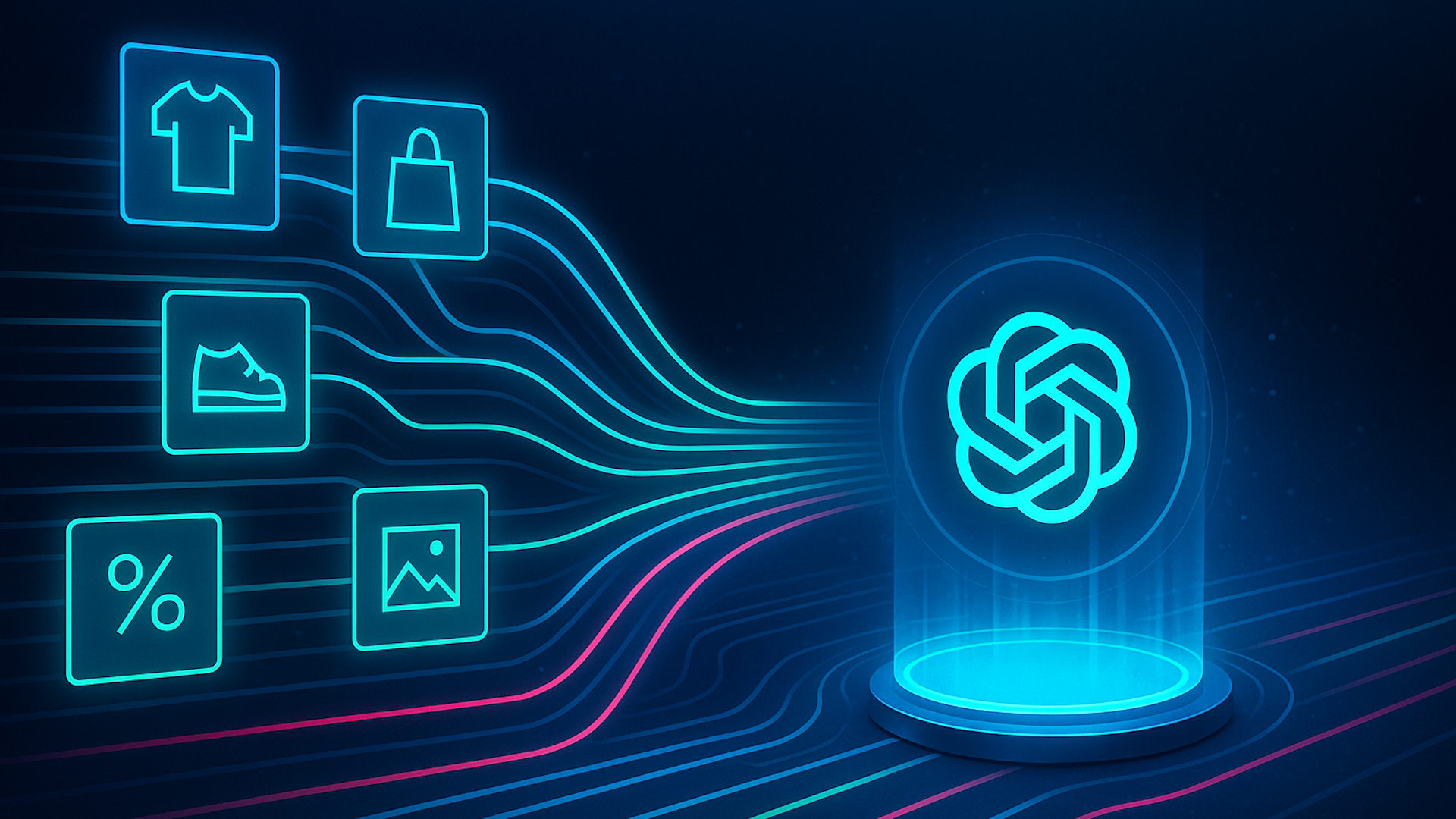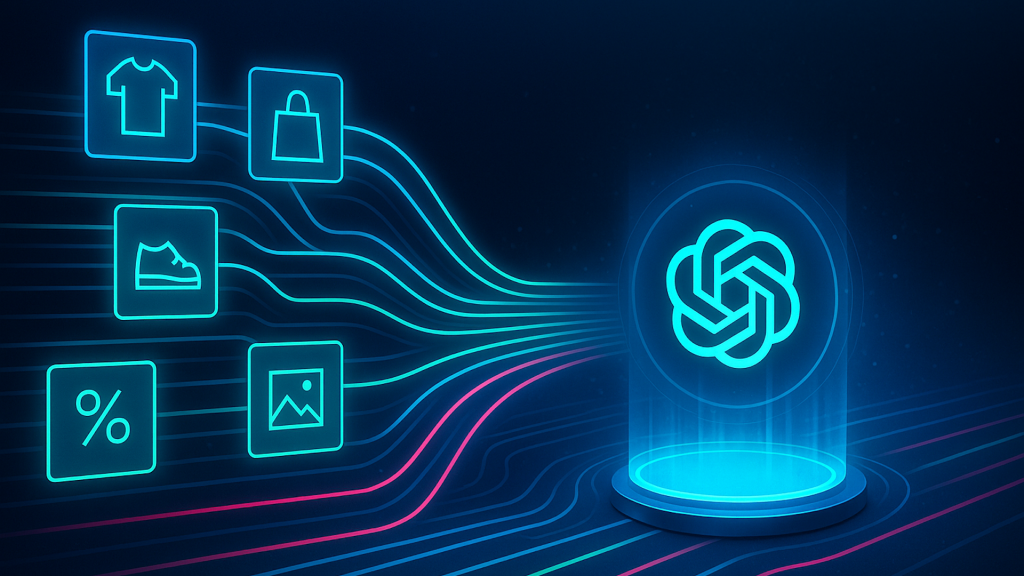Optimizing for ChatGPT Shopping: How product feeds power GEO

OpenAI’s Agentic Commerce Protocol (ACP) is more than a new ecommerce channel.
By adding structured merchant feeds directly into ChatGPT, it changes how products are discovered and purchased in conversational search – and opens new opportunities for marketers.
This shift moves us closer to real differentiators for generative engine optimization (GEO).
Influence now occurs not only on pages but also within the structured data that conversational agents can consume, validate, and rank.
While that’s been partly true for Google, ChatGPT introduces important differences we’ll unpack here.
Why feeds in ChatGPT represent a new model
While Google relies on crawling, links, and page-level signals to determine rank, ChatGPT takes a different approach – the feed isn’t just another signal.
It’s a primary authority on your brand and products.
Price, stock, and product attributes – all supplied by you – directly shape visibility.
Your data is now both the input and the signal of differentiation.
Here’s why this matters for GEO:
- The feed is primary, not secondary: The ChatGPT product feed drives indexing, matching, and ranking.
- Authority shifts: Merchant data isn’t one of many signals; it’s the trusted source.
- Ranking is conversational: There’s no Page 1. Being cited or recommended depends on how well your feed matches the query context and how other trust signals reinforce it.
Treat the feed as a strategic marketing asset – not just a technical requirement.
Success depends on how completely and clearly your data reflects what buyers ask for in natural conversation with ChatGPT.
Dig deeper: ChatGPT Shopping is here – and it’s changing ecommerce SEO rules
Feed structure: What you must provide
The ChatGPT Product Feed Specification requires merchants to supply structured product data via TSV, CSV, XML, or JSON files, refreshed as often as every 15 minutes.
Required attributes include:
- Product ID, title, description, price, availability, and weight.
- Merchant identity fields like seller name, seller URL, and policy links if checkout is enabled.
- Media such as a main image.
Without these, your products may be disqualified from search or checkout if any required fields are missing or invalid.
Getting the basics right is table stakes. If your feed fails here, nothing else matters.
Audit your product data now and set a refresh process so stock and pricing are never stale.
Where SEO strategy comes in: The optional fields
At first glance, this may look like the Google Merchant Center feed – and in some ways it is – but ChatGPT adds new layers of differentiation.
- Performance signals: Popularity score, return rate, product review count, and average rating. In Google, reviews sit outside the feed. In ChatGPT, you can include them in the feed, offering more direct influence over perceived quality – though how much weight OpenAI gives them remains to be seen.
- Rich media: Video and 3D models. These new signals can boost visibility inside conversational flows.
- Custom variants: Beyond color and size, you can define unique attributes that match intent-heavy queries like “mahogany desk, 48 inches wide” or “snapback cap in navy.”
- Geo targeting: Region-specific pricing and availability can be built into the feed.
- Multiple categories: While Merchant Center limits one category per product, OpenAI’s documentation suggests these feeds may support more than one path, though this hasn’t been explicitly confirmed.
These optional fields will separate the winners from the pack.
Early adopters who invest in them will gain more visibility and trust in ChatGPT conversations.
Filling out unique fields the right way
The ChatGPT product feed includes attributes that go beyond what most merchants have used in Google Merchant Center.
These fields can improve product discovery for more specific queries – if you fill them out correctly.
Rich media
- video_link: Must be a publicly accessible URL. YouTube is the safest hosting choice since the spec requires accessibility via HTTPS. Keep videos short and product-focused, with clear metadata and transcripts where possible.
- model_3d_link: Supports GLB or GLTF files. Valuable for products where dimensionality matters, like furniture or electronics.
Performance signals
- popularity_score: Merchants can submit a score on a 0–5 scale, or merchant-defined. While this creates risk of inflation, OpenAI flags it as a ranking signal. Aim to reflect genuine sales velocity.
- return_rate: Submitted as a percentage. A lower rate signals reliability. Transparency here may help trust, since ChatGPT relies on feed-level trust signals.
Variants
- custom_variant fields: Merchants can define up to three custom variant categories and their options (e.g., wood type, cap style). Each category supports up to 70 characters, and each option up to 40 characters. This flexibility allows you to mirror the attributes shoppers ask for in natural queries.
Try thinking like a shopper when coming up with the conversation.
What additional detail would they type into ChatGPT?
With your feed mirroring those traits, your chances of being recommended have improved.
Get the newsletter search marketers rely on.
See terms.
Character limits: Maximizing your fields
OpenAI’s spec defines maximum lengths for many attributes:
- id: 100 characters.
- title: 150 characters.
- description: 5,000 characters (plain text only).
- mpn: 70 characters.
- brand: 70 characters.
- material: 100 characters.
- item_group_title: 150 characters.
- custom_variant categories: 70 characters.
- custom_variant options: 40 characters.
Merchants should treat these limits like they treat title tags in SEO.
Use the space wisely. Descriptions should be written for clarity and intent, not keyword stuffing, but truncating a field is leaving relevance on the table.
Max out your titles and descriptions thoughtfully. Every character is another chance to match the phrasing a shopper will use in ChatGPT.
Categories: ChatGPT vs. Google
The spec requires a product_category field that follows a path such as Apparel & Accessories > Shoes.
- In Google Merchant Center, products can only map into one category.
- In ChatGPT, documentation only shows a single path, but does not explicitly say you can not add more than one.
Watch this space. It does seem that multiple category paths are supported.
Cross-categorization would likely increase visibility. If not, you will need to pick carefully.
Choose the category most aligned with conversational queries.
Ranking in ChatGPT: What is known and what is hypothesis
OpenAI’s documentation states that feeds are ingested, validated, and indexed for retrieval and ranking.
The word “ranking” appears repeatedly.
Known factors:
- Freshness is critical. The spec supports updates every 15 minutes.
- Consistency across feed, site, and policies is required.
- Product availability, price accuracy, and error-free submissions improve reliability.
Likely factors:
- Review velocity and sentiment will carry weight, similar to how product reviews shape trust in Google.
- Products with richer media will perform better in conversational contexts where media is requested or helpful to the answer.
- Merchants who submit more complete attribute sets may gain priority when the assistant needs to answer precise queries.
Think of this less like page-one rankings and more like conversational prominence.
The assistant’s recommendations are fluid, and completeness may be the tie-breaker.
Why this fits GEO
Traditional SEO has focused on optimizing webpages and content.
GEO focuses on how generative systems assemble answers.
The ChatGPT merchant feed sits at the intersection:
- It is structured, like schema, but also authoritative, like your product page.
- It is not a passive signal. It is the dataset ChatGPT indexes and reasons over.
- It introduces new levers (performance metrics, custom variants, rich media) that Google did not give us in one place.
The ChatGPT merchant feed is among the first broadly public consumer-facing cases where structured data directly determines what an LLM shows in commerce flows.
Preparing now
These are a few key steps to take:
- Make sure you sign up as a merchant to directly submit your feed and hopefully get insights about product performance.
- Map your current product data. Determine what attributes may be missing, such as material, sizes, or variants.
- Create media aside from images. Plan for videos and 3D files.
- Collect reviews. Organize the product review counts and ratings so they can be supplied to the feed.
- Write thorough titles and descriptions. Think like a user asking ChatGPT.
- Align feed data to the site schema. It’s important that structured markup is consistent with the feed.
- Plan refresh cycles. Out-of-date pricing or stock will hurt visibility.
- Prepare signals of trust. Have live, linkable policy pages, accurate return windows, and seller information.
These are not just tasks for developers.
The SEO and marketing teams should own the story of how products are described, categorized, and trusted in conversational search.
What comes next
It’s still early. We don’t yet know how OpenAI will weigh each signal, and sponsored placements will likely enter the mix.
Shopping carts with multiple items and bundled recommendations are also probable.
Still, the direction is clear: merchant feeds are becoming the foundation of conversational commerce and discovery.
Brands that act now will be best positioned as AI systems become the starting point for shopping.
Dig deeper: Instant Checkout in ChatGPT brings agentic commerce to life







Recent Comments